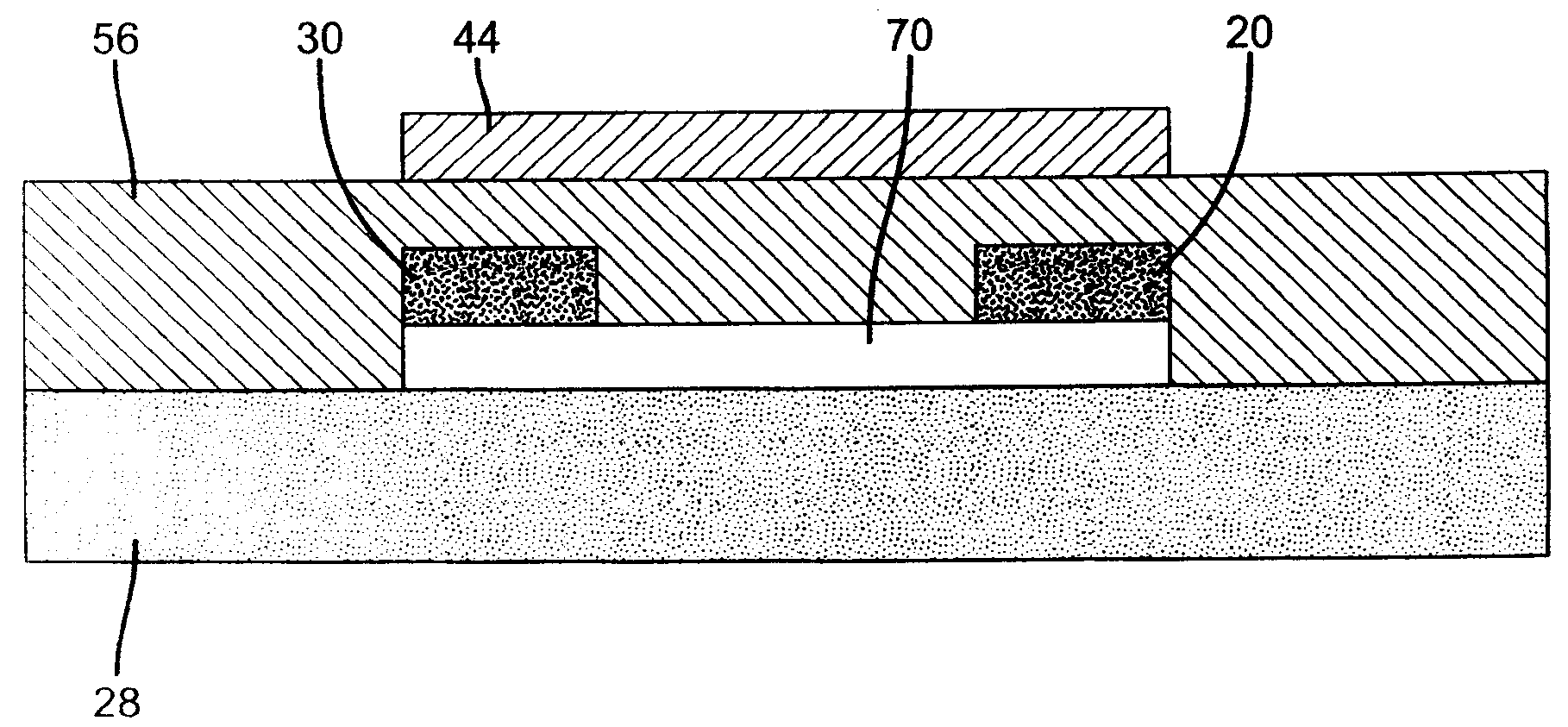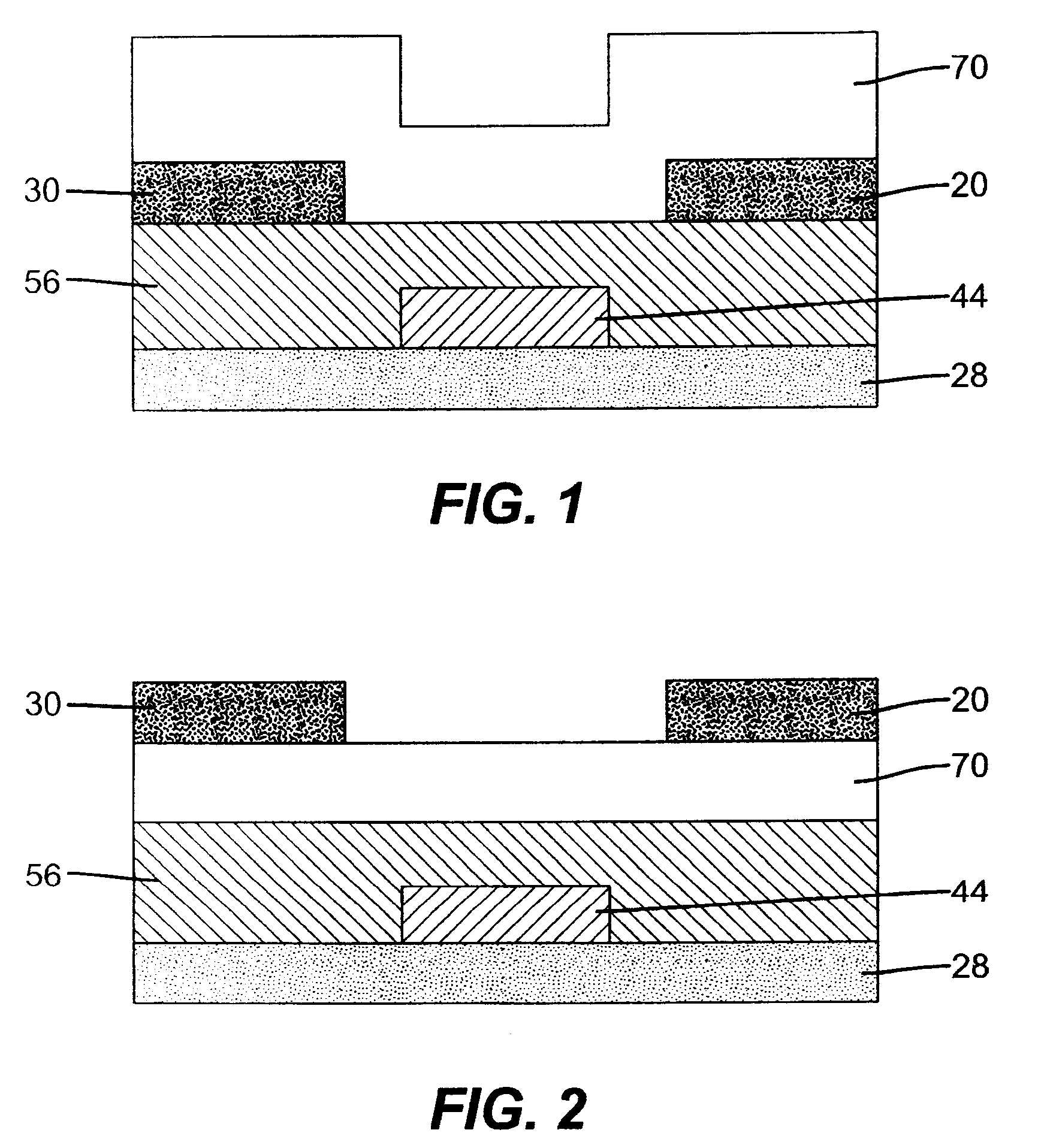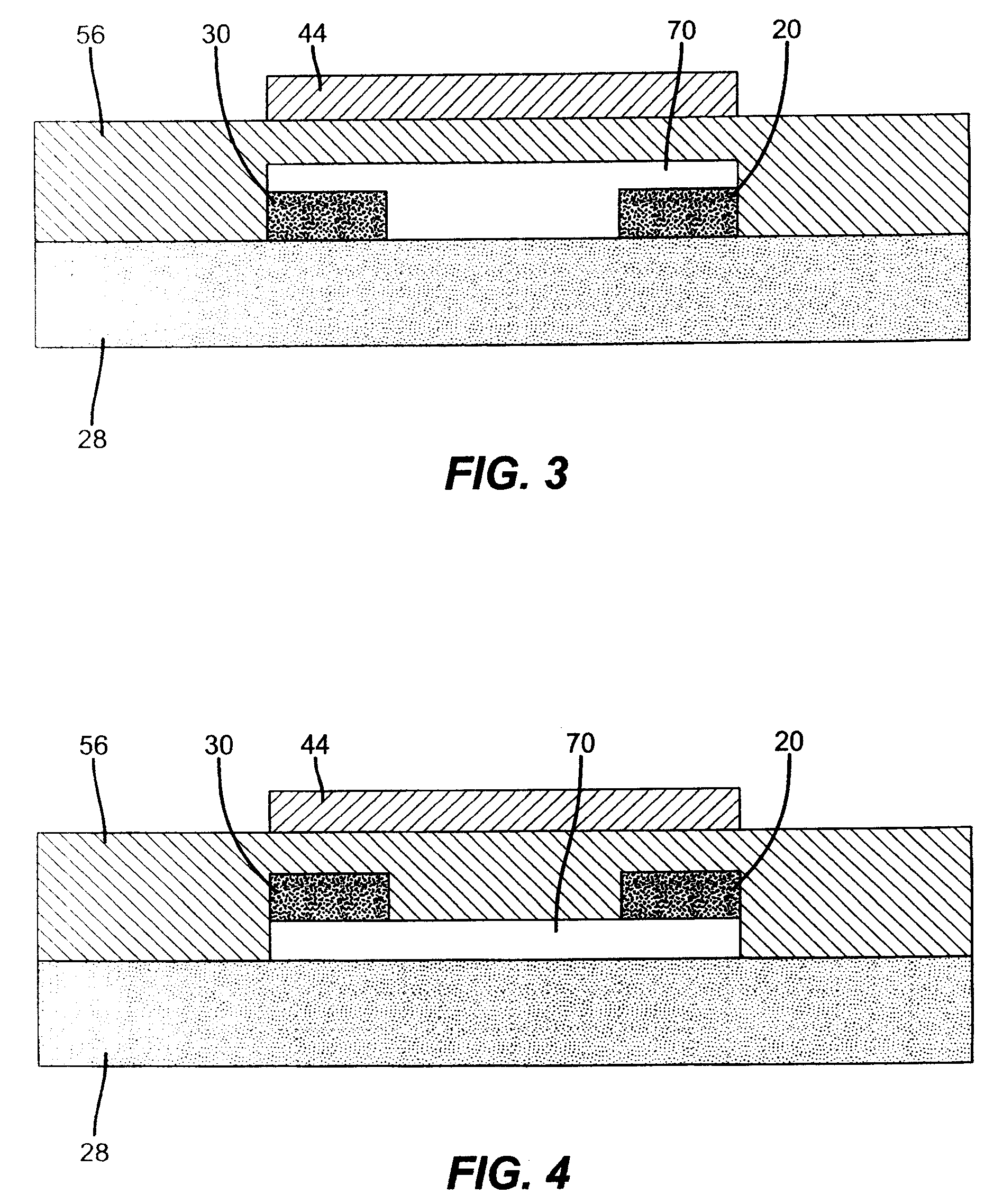Method of making thin film transistors comprising zinc-oxide-based semiconductor materials
a technology of zinc oxide and semiconductor materials, applied in the direction of sustainable manufacturing/processing, semiconductor devices, climate sustainability, etc., can solve the problems of amorphous silicon, difficult or complicated processes, and most organic semiconductors generally have inferior or problematic electronic properties, etc., to achieve excellent field-effect electron mobility, stable threshold voltage, and sufficient performance properties
- Summary
- Abstract
- Description
- Claims
- Application Information
AI Technical Summary
Benefits of technology
Problems solved by technology
Method used
Image
Examples
example 2
[0158]In this inventive example, the semiconductor layer was applied as in Comparative Example 1 and then inkjet printed silver nanoparticles were used to make the source and drain for the transistor.
[0159]Inkjet printing experiments were performed using a system consisting of a sample platen supported by a set of X-Y translation stages, piezoelectric demand-mode printheads supported by a Z translation stage, and software to control these components. The printheads of this inkjet system are suited to dispense droplets in the 20-60 picoliter range. Approximately 2 cc of the fluid to be printed is placed in a sample cartridge which is then screwed to the printing fixture. The printhead is primed with ink using pressurized nitrogen. A TENCOR profilometer was used to measure the printed film thicknesses of a series of calibration samples. The drop volume was calculated by best-fit linear regression in a simple model relating number of drops fired, ink concentration, and printed film thi...
example 3
[0164]This Example shows a variety of inkjet printed silver contact electrodes applied to a variety of inkjet-printed ZnO semiconductor films in thin film transistors made according to the present invention. In these examples, the ZnO semiconductor films were printed using the same inkjet printer as used for the making the source and drain from the silver nanoparticles.
[0165]The variety of inkjet-printed ZnO-semiconductor films were prepared as follows. A 30 mm square sample of a silicon wafer was cleaned according to the procedure described above and placed on the printhead stage. A 3.31 wt % dispersion of charge stabilized ZnO nanoparticles was diluted with ethanol to 1.3 wt %, and an ink cartridge was filled with the resulting fluid. By overlaying drops at different drop spacing, a set of ZnO nanoparticle films with varying film thickness were obtained. The samples were heated for 10 minutes at 200° C. in air. A 0.175 molar zinc acetate solution in methanol was then printed on to...
example 5
[0173]In this example, TFT structures were prepared in the same manner as for Comparative Example 4, except inkjet printed silver nanoparticles were employed in making the source and drain. After deposition of the zinc oxide film, a photoresist pattern was prepared on the ZnO coating containing pairs of open rectangular areas, which defined the desired shape and arrangement of the source and drain regions of the TFTs. The ZnO coating between a specific pair of open rectangular areas was therefore covered by the photoresist material, which defined the shape and location of the channel of that particular TFT. Using the inkjet printing system described in Example 2, the substrate was placed on the sample holder at 60° C., and a top-view camera was used to locate the open rectangular areas on the ZnO coating. A commercially available silver dispersion purchased from Cabot (Albuquerque, N. Mex.), was diluted 1:1 with water and deposited specifically onto the open rectangular areas on the...
PUM
 Login to View More
Login to View More Abstract
Description
Claims
Application Information
 Login to View More
Login to View More - R&D
- Intellectual Property
- Life Sciences
- Materials
- Tech Scout
- Unparalleled Data Quality
- Higher Quality Content
- 60% Fewer Hallucinations
Browse by: Latest US Patents, China's latest patents, Technical Efficacy Thesaurus, Application Domain, Technology Topic, Popular Technical Reports.
© 2025 PatSnap. All rights reserved.Legal|Privacy policy|Modern Slavery Act Transparency Statement|Sitemap|About US| Contact US: help@patsnap.com



